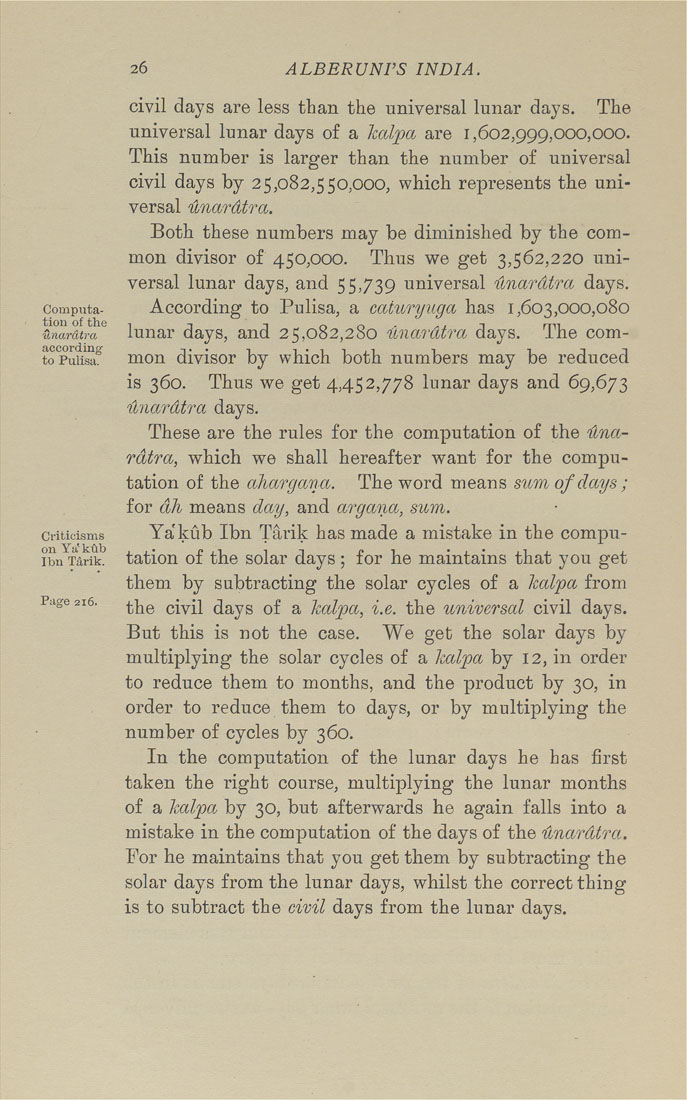26
ALBERUNTS INDIA.
Computa¬
tion of the
unardtra
according
to Pulisa.
Criticisms
on Ya' kub
Ibn Tarik.
Page 216.
civil days are less than the universal lunar days. The
universal lunar days of a kcdpa are 1,602,999,000,000.
This number is larger than the number of universal
civil days by 25,082,550,000, which represents the uni¬
versal unardtra.
Both these numbers may be diminished by the com¬
mon divisor of 450,000. Thus we get 3,562,220 uni¬
versal lunar days, and 55,739 universal unardtra days.
According to Pulisa, a ccduryuga has 1,603,000,080
lunar days, and 25,082,280 unardtra days. The com¬
mon divisor by which both numbers may be reduced
is 360. Thus we get 4,452,778 lunar days and 69,62;^
unardtra days.
These are the rules for the computation of the unct-
rdtra, which we shall hereafter want for the compu¬
tation of the ahargana. The word means sum of days;
for ah means day, and argcom, sum.
Ya'kub Ibn Tarik has made a mistake in the compu¬
tation of the solar days; for he maintains that you get
them by subtracting the solar cycles of a kalpa from
the civil days of a kalpa, i.e. the universal civil days.
But this is not the case. We get the solar days by
multiplying the solar cycles of a kalpa by 12, in order
to reduce them to months, and the product by 30, in
order to reduce them to days, or by multiplying the
number of cycles by 360.
In the computation of the lunar days he has first
taken the right course, multiplying the lunar months
of a kalpa by 30, but afterwards he again falls into a
mistake in the computation of the days of the Unardtra.
For he maintains that you get them by subtracting the
solar days from the lunar days, whilst the correct thing
is to subtract the civil days from the lunar days.
|








